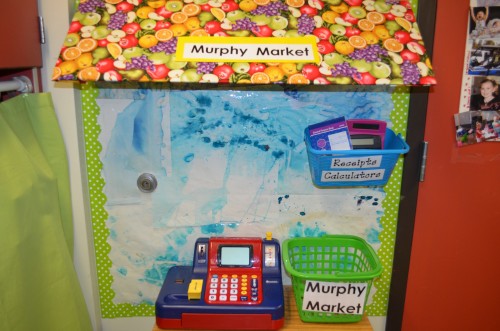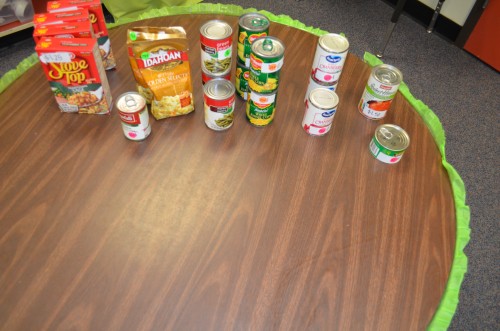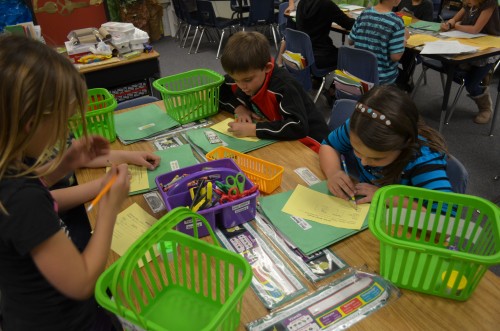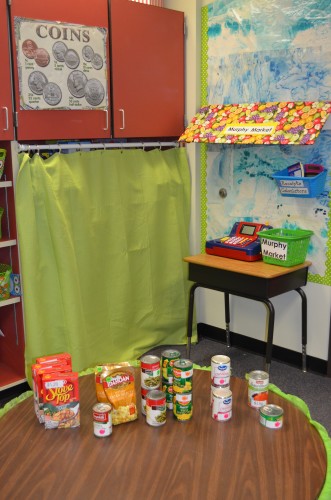Shopping for Standards: Setting Up a Classroom Shop
Looking for a fun, easy way to strengthen students’ money skills? Set up a classroom market! This guaranteed favorite can be used throughout the year and modified according to instructional needs. Follow these easy steps to create your own classroom market:
1.Setting up shop: Visit your local dollar store for grocery baskets, cashier receipt pads, calculators and price labels. (Make sure each student in the center has a grocery basket so each has opportunity to shop.) Make a store awning using a cardboard science project trifold and cover it in fabric. A simple, inexpensive cash register can be found on e-Bay or local thrift shops.
2. Providing products: Bring in canned products, purchase plastic play food or pull out Treasure Box trinkets. My market is holiday-based to appeal to student interest so it changes regularly. Students can shop for Thanksgiving dinner, holiday gifts, school supplies, etc. Changing the product once a month promotes engagement as students are excited to see and purchase new items.
3. Pricing power: Price items according to students’ instructional needs. If you just introduced money, keep prices low and easy to count. This provides counting practice and builds number sense. As students become proficient counters, increase the prices and have students add more complex numbers. You can also add dollars and cents to increase difficulty.
4. Hiring help: For the first month or two, the teacher or parent volunteer will be the cashier, checking students’ totals and helping them make change. As students become proficient with these skills, allow students to be the cashiers. Students can partner up; one student will be the cashier, one will be the shopper and then they will switch roles. Another option is to allow one or two students can be the cashier(s) for the whole group.
5. Synthesizing standards: Add functional text forms to incorporate reading and writing standards into the market. Simple items such as shopping lists, receipts and inventory check-lists require students to read and write a variety of functional text, an important component of informational text.
Set up a shop in your classroom and you’re in store for endless instructional possibilities!





